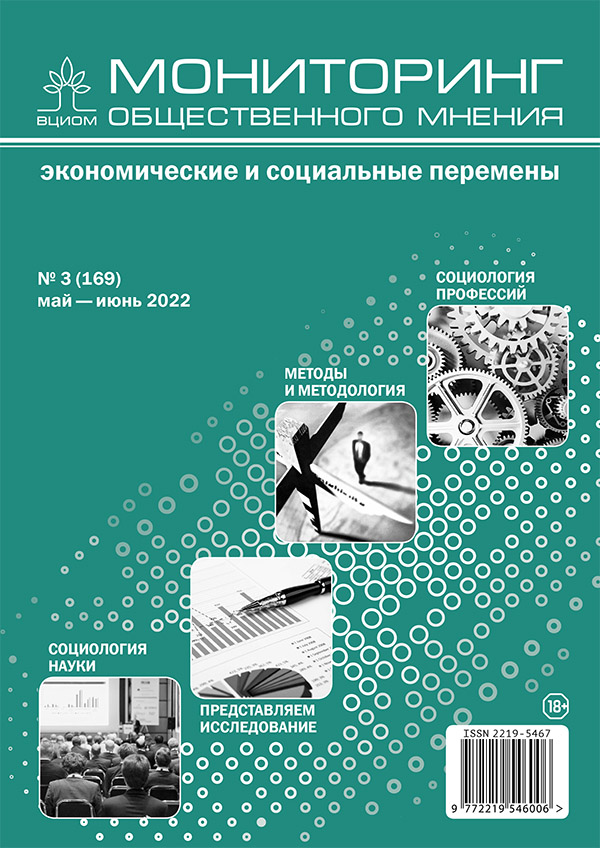The Media Sphere During the COVID-19 Pandemic: Regional and Discursive Differences in Agenda-Setting
DOI:
https://doi.org/10.14515/monitoring.2022.3.1984Keywords:
media, uncertainty, COVID-19, hyperreality, risk society, security, self-isolation, Russian regions, agenda-setting, problem constructionAbstract
In conditions of forced self-isolation, media communication has a crucial role. According to agenda-setting theory, out of a variety of surrounding topics, media choose the most significant and discussed for their audience. The choice is often based on political, economic and other motives. This raises the question of the correlation between the real threat and its representation in different media.
The study focuses on the Russian media content from January 22 to July 19, 2020. We analyze the dynamics of news about COVID-19 daily and their content in various media in parallel with the dynamics of newly detected cases in Russian regions, Moscow, Russia in general, and the world. We focus on regions where the pandemic was not weakening by the middle of summer. The study compares national and regional media, mass media in regions, state, and non-state media.
We assumed the coincidence of the news amount with the rise of newly infected people in the region. However, this hypothesis was confirmed only in Moscow and cities with a similar epidemiological scenario. Both national and regional media focus on Moscow’s epidemiological situation. Before May 6, the focus was on world events. The growth of new cases in regions was accompanied by a decrease in attention to this problem in the media. Initial strong interest in epidemic was associated with the risk uncertainty and the introduction of restrictive policy; the real epidemic in regions does not affect the coverage of this aspect in the media. There are also some differences between media in megacities and smaller cities.
State and non-state media are identical in the dynamics of COVID-19 news. We detected a gradual substitution of pandemics agenda as well as differences between state and non-state media. The state media tried to calm down the audience regardless of how serious the restrictive measures were, while non-state media criticized the health care system, inconsistency of restrictive measures, and described patients’ experiences.
Downloads
Published
How to Cite
Issue
Section
License
Copyright (c) 2022 Monitoring of Public Opinion: Economic and Social Changes Journal (Public Opinion Monitoring) ISSN 2219-5467

This work is licensed under a Creative Commons Attribution-NonCommercial-ShareAlike 4.0 International License.






